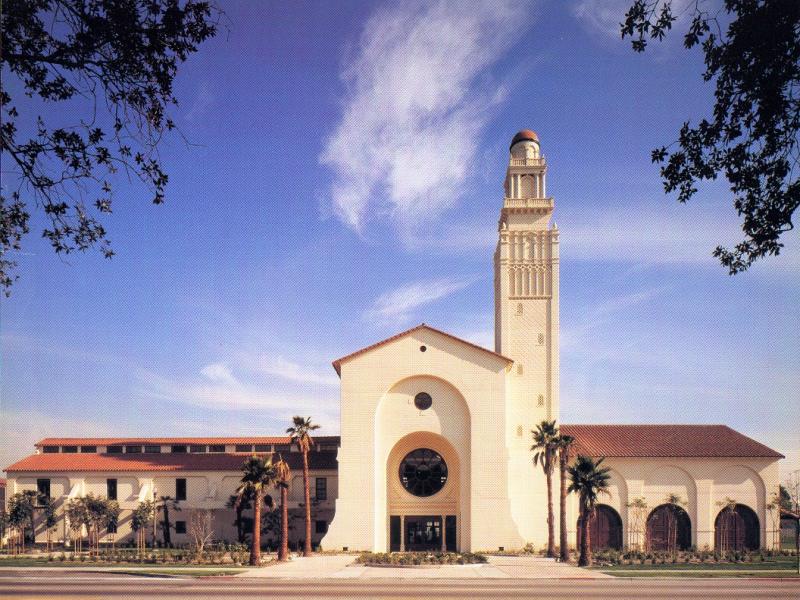The Swedish Film Institute
Sweden is justly proud of its film history. The Golden Age films of Mauritz Stiller and Victor Sjöström between 1917 and 1924 were some of the finest films produced at that time anywhere in the world. Directors like John Brunius, his wife Pauline Brunius and Dramaten Head of School Gustaf Molander directed good films during the Golden Age era and the years after Sjöström and Stiller departed for America as well. After World War 1 all of Europe turned to Sweden for inspiration in film production.

The Swedish Film Institute
The Swedish Film Institute (SFI) is located in Filmhuset, a modernist building opened in 1970. SFI evolved from The Swedish Film Society, founded in 1933, making it one of the oldest film related collections in the world. The space that also includes theaters and a restaurant. SFI has a collection of printed material, documents, photographs, posters and films.
SFI is situated amid the parks of the Östermalm district of Stockholm. Access to modern material and databases is available in the open section. The library also manages restricted archival material. When I visit, I get a small room and material that I requested in advance is brought to me. The staff is wonderful and knowledgeable. They take great care of the material they manage.
SFI has the Victor Sjöström collection which includes material that Mauritz Stiller left in his care. While there isn’t a large volume of material, some of it is very important. SFI also has the original script that Ragnar Hyltén-Cavillius and Stiller wrote for Odalisque From Smolna. They own the surviving short segments of industrial films and the comedy Luffar-Pettar that Garbo first appeared in before she started at Dramaten.
SFI has many of the old Swedish film magazines, both for the industry and fans. Here I found early interviews that Garbo granted, the first photographs from the Gösta Berling set and descriptions of its production.
Elsewhere in Europe
SFI is not the only archive in Stockholm that was useful for researching Garbo. I also found important bits of information at; Musik- och teaterbiblioteket, Riksarkivet, The Swedish Royal Dramatic Theatre, the University of Stockholm Theatre Archive and Kungliga biblioteket.
Garbo didn’t spend that long in Germany, but there are still traces of her life in archives. The best were Deutsches Filminstitut & Filmmuseum and Deutsche Kinemathek.
The Margaret Herrick Library
One of the great places to do research on Greta Garbo, or any Hollywood legend, is the Margaret Herrick Library (Herrick). Herrick is owned by the Academy of Motion Picture Arts and Sciences (Academy), the folks who bring you the Oscars.

The Margaret Herrick Library
The Academy was founded in 1927 and the library began collecting the following year. Margaret Herrick, for whom the library is named, was the first librarian. Originally housed in in a room at the Roosevelt Hotel it moved to its current location in 1991, taking over a beautiful Spanish Colonial building that had originally been the City of Beverly Hills waterworks.
Margaret Herrick arrived at the library because she was the wife of the man who became the Executive Secretary of the Academy in 1934. She had been the head librarian for Yakima Washington before the family relocated to Hollywood and she stepped in and ran the then tiny place. She was formally appointed librarian in 1936, which allowed her to start building a more robust collection.
In 1943 she took over as Executive Secretary of the Academy when her husband was mobilized. Upon his return, the Board opted to keep her in the job rather than her soon ex-husband. She ran the Academy for nearly three decades.
Herrick is an intimidating place. It has limited public hours (10-6 four days per week) and limited seating. You must reserve your place and the materials you want to see in advance. At the front door you are buzzed in, and checked in. Then you proceed upstairs where you check in again. Then you proceed to the section with the materials you are going to access. At the desk you check each thing out and sit at a table.
The staff is super helpful and knowledgeable. Because like all Hollywood archives there has been lots of theft over the years, they work hard to protect their materials. Everything is checked in and out one piece at a time. You can bring your computer, but not much else. A pad of paper and a pencil. No pens. I now take pictures of most things to maximize what I can see during my visit, and then organize it later. That means I have to organize the photos as I take them. I take photos of things like file tabs, just so I can remember where something was found.
I first visited to learn about photographs. I had the collection of the photographs Garbo had collected of herself from the MGM photographers, and I didn’t really understand what they were. The late Robert Cushman was my first teacher regarding the ins and outs of how MGM took photos and managed them. But I could help as well. I was able to show how an uncredited pair of scrap books were created by Ruth Harriet Louise, MGM’s first portrait photographer. Robert thought they were hers, but I could show him why that was correct. Louise had grown up in the city next door to where I grew up, and she even took a portrait of one of my father’s cousins. So I knew a little about her life.
I went back to look at scripts, production files, censorship files, letters that had been donated, advertising material, the list becomes nearly endless.
The downside of Herrick? Well, they are closed Wednesdays. Since I come in from out of town, if I plan to be there for more than two days, I have to figure out Wednesday. Searching through their collections online can be a little maddening. But I also don’t see how to make it better, they have so much stuff in different categories of stuff. Cataloging a photograph, a magazine issue, a scrap book, a censorship file and a letter covers a lot of ground.
With its limited access Herrick is not the kind of place where you just drop in. If you love Hollywood and have any research interest at all, it is worth a visit.
Elsewhere in California
While a large percentage of material related to Garbo is at Herrick, the papers and interviews with some of Garbo’s co-workers are at other archives in Southern California. One of the most useful was the Louis B Mayer Library at the American Film Institute, which is set on the edge of the Hollywood Hills on a beautiful campus. The Mayer library has both interviews and archival records.
The USC Cinematic Arts Library has some wonderful interviews. The hold the photo archive for the Los Angeles Examiner.
Around America
I visited a lot of archives. Some, like the Billy Rose Library in New York City provided something small but useful. The Billy Rose Library had the only microfilm of one key old film magazine. The original had been stolen. The most interesting was the comprehensive records at The Catholic University of America, which cover the efforts of the Catholic Church to institute film censorship.
I also found important parts of the Garbo story in the days I spent at; the Clarence Brown archive at the University of Kentucky, the Wisconsin Center for Film and Theater Research at the University of Wisconsin, the Harry Ransom Center at The University of Texas at Austin, the Browne Popular Culture Library at Bowling Green State University and the Library of Congress.
You May Also Like…
How Greta Garbo Got Her Name
How Greta Garbo Got Her NameResearch for my February 2026 book Greta Garbo and the Rise of the Modern Woman revealed...
The July 1925 Portrait Sessions with Arnold Genthe
After arriving in New York, Garbo would sit for photographer Arnold Genthe for three different portrait sessions....
I have a question for you….would be great if you could respond. Thank you!
Hi Paul. What is your question?